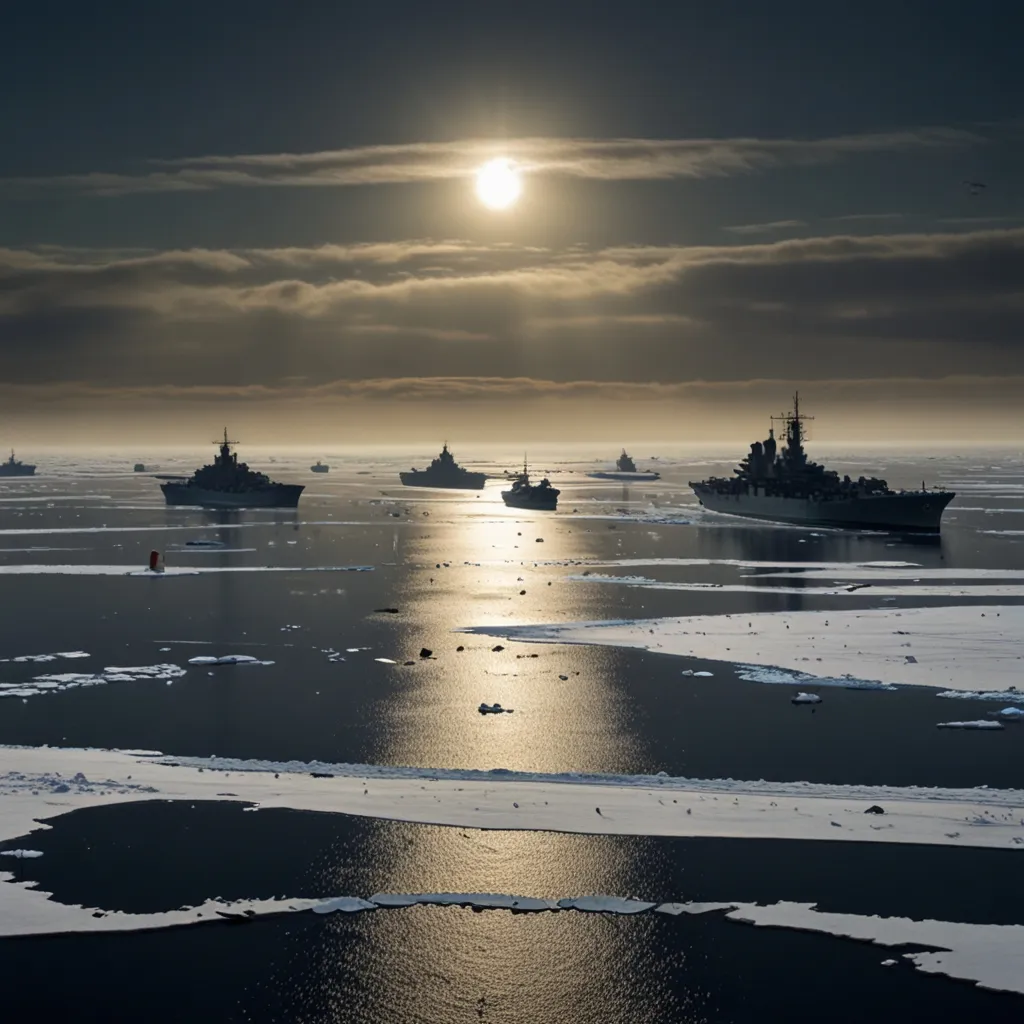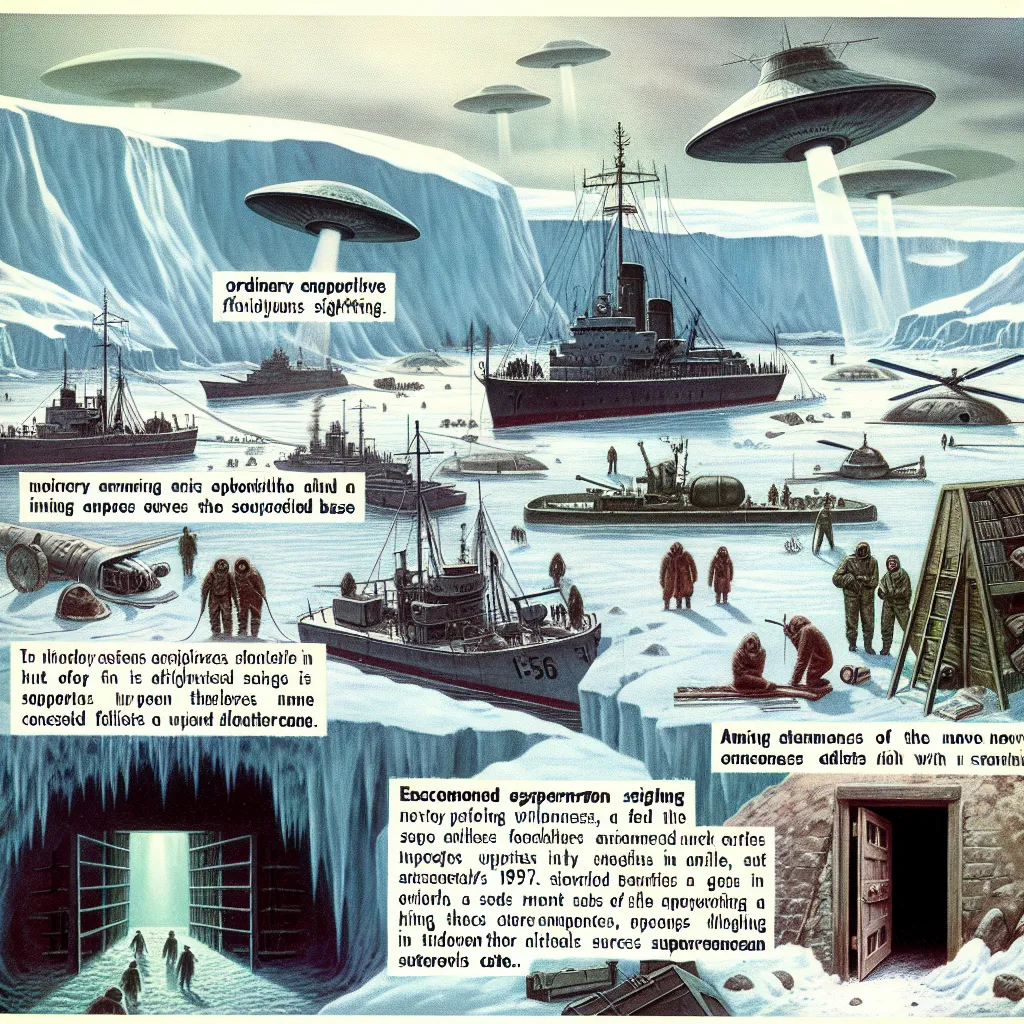Back in August of 1946, something huge was brewing down south. The United States launched one of the most massive naval undertakings ever, aimed straight at Antarctica. Steering this colossal expedition was none other than Admiral Richard E. Byrd—a name that echoed with grandeur in naval history. The mission, dubbed Operation High Jump, had a fine cover story: scientific research and military training. But behind that curtain, there were whispers of grander, perhaps even ominous, objectives.
Off the records, one of the true aims was to lay claim over swathes of the icy continent, notwithstanding any diplomatic nuances or political denials from the U.S. Another fascinating twist in this southern saga revolved around the Nazis. There were rumors—bold, otherworldly rumors—that in the frozen expanse, remnants of the Third Reich had set up camp. Their mission was thought to include harboring secret technologies, perhaps even flying saucers. Yep, you read that right. UFOs were reportedly zipping across the Antarctic skies, believed to be part of Nazi experimental flights. Admirals and their fleet had quite the suspicious and icy breadcrumb trail to follow.
Let’s rewind a bit and head back to December of 1938. The war drums weren’t quite thudding yet, but Hitler was certainly mobilizing. His resources were targeting something rather arcane—ancient artifacts rumored to wield mighty powers. A secretive expedition set sail to Antarctica, the SS Schwabenland. On it were not only scientists and engineers but also members from the eerie Thule Society, a group steeped in occultist beliefs. This society held fast to the idea that a super advanced race of Aryans existed within the Earth, accessible via an opening at—where else?—the South Pole.
The Nazis were all about finding a fitting location for a secret base, Base 211 to be exact, and potentially making contact with these inner-earth denizens. Fast forward to a month later, the Nazis reached the icy shores and discovered an anomaly—an oasis in the icy desert. The area was seemingly warm, thanks to a subterranean geothermal vent that kept the place cozy enough for life. It felt like the perfect secret lair, precise for U-boats to linger undercover.
As World War II dragged on, Base 211 grew from just a hidden hit-and-run spot to possibly one of retreat. The crumbling Third Reich funneled resources, troops, and assets to this icebound hideaway. Amid the allied retaliation, many formidable faces vanished from post-war Europe, slipping into the shadows of South America—reportedly as far as Argentina. A notable name that went MIA was Hans Kamler, who had overseen Nazi secret weapons projects.
Speculations flew as wildly as the alleged UFO sightings that spun tales of Kamler’s escape, possibly piloting obscure aircraft towards this mysterious Antarctic front. Those speculations hinted at ongoing Nazi operations with unknown, possibly extraterrestrial supporters. Real or tall tale? It was high time to find out.
Enter Admiral Byrd and the American naval force, with strength enough to reshape a land, not to mention taking out a Nazi stronghold if one existed. Sporting nearly 5,000 personnel, 13 ships including an aircraft carrier, and an array of planes and submarines, they weren’t just there for a sightseeing tour.
Outwardly, Operation High Jump harbored goals like training men to survive the chilling grip of the Antarctic environment or studying polar weather patterns. But with all that weaponry, something bigger—much bigger—seemed to loom on the horizon. By mid-January 1947, the operation was in full swing, supposedly lasting up to eight months. But suddenly, barely a month in, it wrapped up unexpectedly. The script flipped dramatically when the entire mission was evacuated, much to everyone’s surprise.
Back in the world where conspiracies brew strong coffee, theories ran wild. Admiral Byrd’s quick return to Chile stirred up a local media storm. Instead of quashing rumors, Byrd fueled the fire, hinting ominously at potentially catastrophic aerial threats the U.S. might face. He painted these threats as emerging not just from above, but possibly from poles where unfathomable technologies, powering flying objects, could swoop sea to sea in a jiffy.
On returning to the U.S., a wall descended on Byrd—governmental gag orders had him button his lip about it all. Operation High Jump’s tale was stuffed into the classified folder, a sealed secret.
Here’s where this narrative brushes with the bizarre. Byrd, radio silence duly enforced, had once faced what some claim was a Dereliction in Duty: three lost hours, during which his whereabouts and experiences yanked threads from reality’s well-sewn fabric. Supposedly, during a flight, Byrd had navigated beyond earthly realms into an oasis teeming with greenery and a city of light, where lost time and defunct controls spoke of influences unknown. Exotic Aryans welcomed him and shared warnings. Developed by a power unseen, capable of erasing nations! This secret record, hushed and hidden, found the light through the hands of Byrd’s son who released it to an unsuspecting world.
Adding layers to this mystery, theories still swirl about international agreements banning free passage through the Antarctic expanse, keeping explorers from poking too deeply into its secrets. Many say those remnants of Nazi engineering could still whirl through icy skies, their technologies holding stark reminders of past dangers.
The fantastical visions of flying saucers, ancient Aryan partnerships, and unknown civilizations within the earth blend the boundaries of historical truth and speculative musings. Though many a skeptic has picked apart Byrd’s secret diary as fabrications and fantasy, tales of concealed bases and cloaked technologies refuse to loosen their colorful grip on public fascination.
Debunkers have dissected the polar adventure into more explainable pinpoints, but always there remain threads that tether imagination to potentiality. Whether myths shading from history’s fog or eye-witness truths silenced by iron-clad governmental ties, Operation High Jump continues to tantalize conspiracy enthusiasts and historians alike.
Whether it’s an undisclosed truth or heightened fable, the echoes of Operation High Jump and Byrd’s Antarctic mission wander through halls of intrigue, locked behind vaults of what-ifs and icy whispers that still, perhaps, hold yet-unseen wonders. Every time these whispered narratives emerge, darker, deeper mysteries lurk, just beneath the frosty cover of the Earth’s last great frontier.






